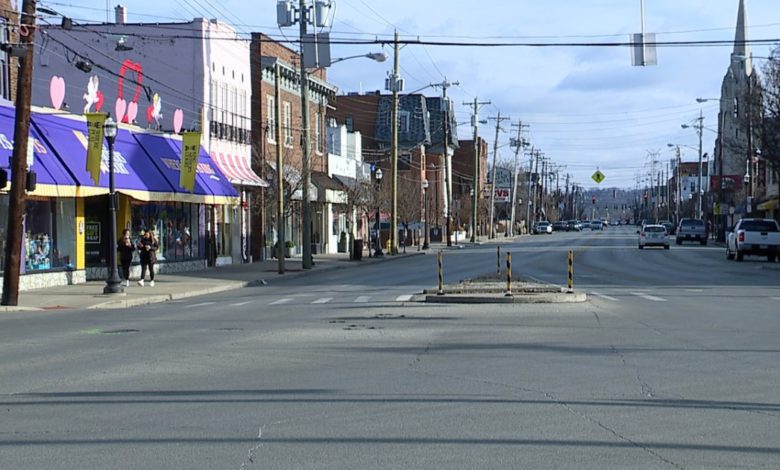
OAKLEY — The city of Cincinnati is holding an inventory study in various neighborhoods to evaluate the state of the housing market. The effort has a special emphasis on assessing housing affordability; officials are currently holding the study in the neighborhood of Oakley.
“The inventory relies heavily on available and what we call 'accessible data' from of course the U.S. Census Bureau, the U.S. Department of Housing and Urban Development and then also the National Housing Preservation Database," said Markiea Carter, the interim director of the Department of Community and Economic Development. "The 2019 American Community Survey is also our primary data source."
The Oakley study began last year; officials hope to finish the project in July. Carter explained the effort is strictly meant to create a snapshot of neighborhoods' housing markets with clear, organized data that other entities can turn to as a resource. She said the city is refraining from making conclusive statements or theories about what is happening in Cincinnati's markets and their affordability.
Carter acknowledged that city workers have had to adjust their workflow to the constraints of the pandemic and said that there have been resulting connectivity problems. She also said that much of the impact of COVID on the populations they are studying in 2020 likely will not be apparent for months or years to come. Still, she does not believe the pandemic will have a large impact on the figures they are gathering. The city was more concerned with keeping the project a priority and sticking to the timeline it set for the project.
Results from the study will be posted to the Department of City Planning's website. This housing inventory study stems from Plan Cincinnati, a 2012 guide that strategically outlined the city's desired growth and development. The original housing inventory conducted in Over-the-Rhine was conducted by the Community Building Institute (CBI). Carter said that CBI has offered guidance and support to the city to coordinate the methodology being used in the current study on Oakley. However, CBI is no longer involved with the project. CBI declined to comment on the effort for this story.
Carter hopes gathering the information will foster a productive conversation about how to achieve goals and visions people have for their own communities.
“We know that housing is a deeply personal topic. We know that people are extremely passionate about it..." Carter said. "We see this as a goal to kind of bring local leaders and elected officials and administration together.”
Oakley, like a number of other Cincinnati neighborhoods, has seen a dramatic rise of new real estate developments in recent years. This has resultingly sparked concerns among residents about the affordability of their community.
Jason Wilcoxon is a pastor at Legend Community Church and a board member of the Oakley Community Council. Wilcoxon and his wife have been living in their Oakley home since 2002. He said it felt like there was a new development in the neighborhood every week.
“My house has at least doubled, if not tripled, in value since we moved here. Not because we've done amazing work to it. Just because the neighborhood price has gone up so high.”
He went on to say that the issue of Oakley's dwindling affordability has particularly been burdensome for some longtime residents. Initially, most of Wilcoxon's neighbors were retired blue-collar workers who had been living in their homes for decades. Now, many of those elderly neighbors have been phased out with other young professionals and their children. Some of those new neighbors have also torn down old homes and built newer, more expensive, homes in their place.
The neighborhood changes has meant that Wilcoxon will be shouldering higher taxes due to the rise in property values. However, he is more worried about his older, more vulnerable neighbors who live on fixed incomes and are less equipped to handle the rising costs of living. Two of his retired neighbors had to move out of their homes because they could no longer afford to stay.
Describing Oakley today, he acknowledged the various positive changes that have come to the area as a result of its ongoing development. He also recognized that remodeling homes in the area has been cost-effective for some his fellow residents. But it is hard to reconcile those positive changes with the disadvantages and unintended consequences for old-timers who might now be caught living on the edge.
“It's cool now to go outside and see kids, like lots of kids, running around in the neighborhood," Wilcoxon said. He was referencing the demographic changes that have also resulted from Oakley's development. "That's good for the city overall. There's just probably a more strategic way we can incentivize that kind of development that's good for everyone.”
The effort is being led by the Cincinnati Department of City Planning with help from the Department of Community and Economic Development. Officials say an AmeriCorps Vista grant is funding the study, while respective community groups are also partnering to facilitate the project. The city is also conducting inventories in North Avondale and Paddock Hills. The current study in Oakley follows others that were previously held in Over-the-Rhine and Walnut Hills.
Monique John covers gentrification for WCPO 9. She is part of our Report For America donor-supported journalism program. Read more about RFA here.
If there are stories about gentrification in the greater Cincinnati area that you think we should cover, let us know. Send us your tips at [email protected].








